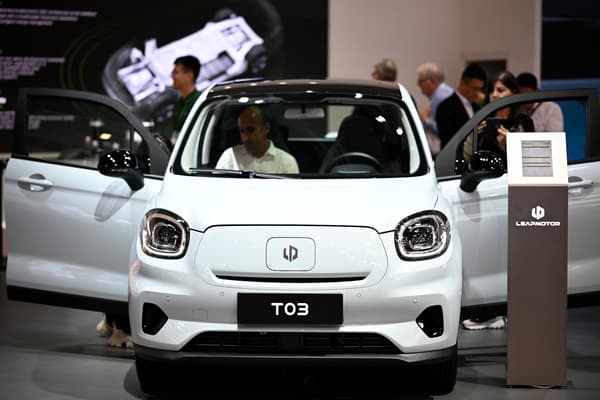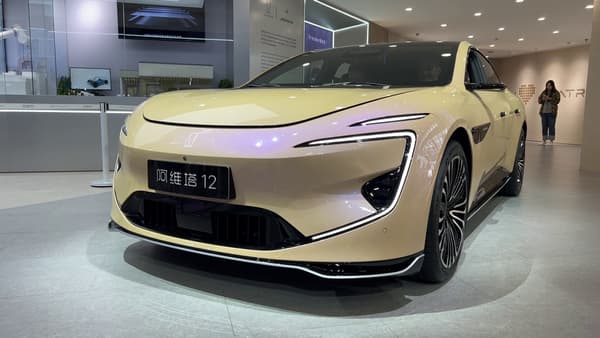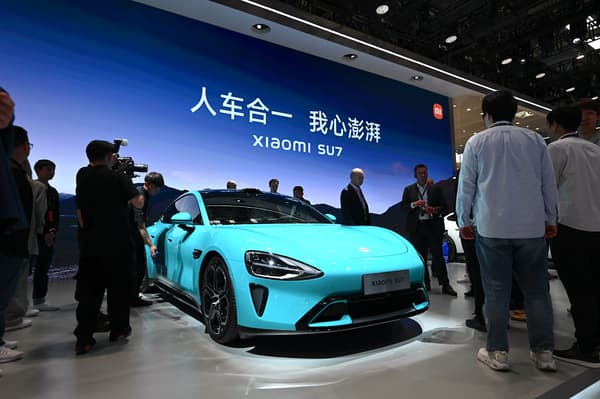Of the almost 300 models visible since Thursday morning at AutoChina, the Beijing Motor Show, around 120 new models are presented. In addition to established Chinese manufacturers such as BYD, Geely and GAC, new brands also exhibit their ranges. Focus on three new electric car names, with very different strategies.
Leapmotor, a start-up in the electronics sector
Leapmotor presents its new product in Beijing, the C16, a large SUV. Next to him, on the stand of this start-up, with which Stellantis established a strategic partnership last fall, are installed the C10 and the T03, the first two models sold this year by the brand internationally, including the ‘Europe’. This family SUV (4.70 meters long) and this small compact will officially arrive in September on the old continent (although the T03 is already available in France).

Exclusive distributor of this brand through a joint venture outside of China, Stellantis has gathered several hundred distributors to introduce them to the brand and begin building a distribution network.
If Stellantis supports the growth of the brand, Leapmotor develops the technologies in-house. Launched in 2015 by an electronics engineer who had already created two startups in the television decoder and camera sector, it sold nearly 12,000 vehicles in January and February in China. His partnership with Stellantis should open up a future outside of China, first commercial and then perhaps industrial. “All options are on the table,” Leapmotor tells us.
Avatr, the alliance of three big Chinese names
Sedan on one side, SUV on the other, messages scrolling on a screen on the hood, here are the Avatr 11 and 12 (pronounced “Avatar”). These two models are displayed at the brand’s stand in a unique pale pink color.

This new brand was founded in 2018, initially by Changan, the country’s fifth largest manufacturer, and Nio, which has since jumped ship, but two other big Chinese names came to the project: CATL for lithium-ion batteries and Huawei for all . Vehicle on-board electronics. Enough to present a technological laboratory in three key sectors for the Chinese economy.
For this reason, the Avatr 12 was already presented at the Munich Motor Show last September. Two new models are expected this year and models with a range extender are also being considered.
Xiaomi, from the smartphone to the car
A wall of telephones and a crowd that overflows towards the other stands, applauding, shouting, at every phrase of Lei Jun, the president of Xiaomi. Enough to console you without having to choose to attack the automotive market while displaying the SU7 at the show.
In fact, the electronics giant had decided three years ago to launch itself into the electric car market. This has been done since the end of December with the SU7, a sedan with a false Porsche air. And the bet seems to have paid off. More than 75,000 orders have been registered and the first deliveries have already begun, according to the Chinese press.

This commitment is also underlined by professionals in the sector, who nevertheless have before them a brand whose objective is to enter the top 10 in the sector within 15 years. Xiaomi relies on automaker BAIC to manufacture its vehicles. This launch would not be profitable according to some observers because the investments are still colossal to develop a vehicle. But mobility clearly represents a strategic development angle for the Chinese brand.
Source: BFM TV


